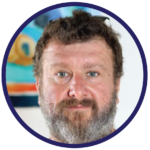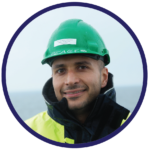SCHEDULE 2021
Changes in the schedule may occur.
Day 1
26 Sep 2021
Day 2
27 Sep 2021
Day 3
28 Sep 2021
Day 4
29 Sep 2021
Day 5
30 Sep 2021
Day 6
01 Oct 2021
Day 7
02 Oct 2021
Day 8
25 Sep 2022
Day 9
27 Sep 2022
16:30 - 18:00
REGISTRATION
18:00 - 19:30
WELCOME DRINK
19:30 - 20:30
DINNER
07:00 - 09:00
BREAKFAST
09:00 - 09:15
Hotel Adriatic - Lecture room
Opening session
Opening words by organizers.
Robots for karstic exploration
Karst generally comprises a network of underground natural conduits, resulting from the dissolution of soluble rocks, limestone, dolomite and gypsum, which may drain groundwater on a large scale. Karst aquifers,... Read More
Leveraging ocean data harvesting by heterogenous robotic organizations and autonomous vehicles as sensor carrying platforms
Sensor carrying platforms may be stationary devices, such as landers and buoys, or mobile platforms, such as marine robotics, ships, aerial systems, and remote sensing satellites from space. The development... Read More
10:45 - 11:00
COFFEE BREAK
Low cost does not come cheap: Working towards a low cost deep-sea autonomous observation system
During the past five years, the development and availability of marine robotic components such as propulsion and control systems, higher energy density batteries, pressure vessels and shared and open source... Read More
Titanic Revisited
In July and August of 2021, Washington-based company OceanGate Expeditions made multiple dives to the wreck of RMS Titanic in the North Atlantic with its prototype Titan 5-person submersible. The... Read More
Present status and achievements at the Swedish Maritime Robotics Centre SMaRC – An invitation to collaborate
SMaRC brings together key industrial and academic partners in an internationally unique collaborative environment. The vision is to demonstrate and enable technology transformation towards the next generation of maritime robots,... Read More
13:15 - 14:30
LUNCH
H20Robotics products
H2ORobotics is a marine technology company founded in 2017 in Zagreb, Croatia as a LABUST spin-off. Our first product is H2Omni-X, a multifunctional autonomous marine surface vehicle capable of very... Read More
Tutorial 1 Intro – KTH: Using Physics-informed Learning for Nonlinear System Identification of Underwater Robots
Accurate dynamics models are crucial for simulation, control design and state estimation for robotic systems. In the case of underwater robots and AUVs in particular, the dynamics can be highly... Read More
DEMO: H2ORobotics products
H2ORobotics is a marine technology company founded in 2017 in Zagreb, Croatia as a LABUST spin-off. Our first product is H2Omni-X, a multifunctional autonomous marine surface vehicle capable of very... Read More
15:30 - 18:30
DEMO POOL
DEMO: PLURATO SAILFIN – Electric hydrofoil surf board
Researching, development and manufacturing of electric hydrofoil board.
19:30 - 20:30
DINNER
20:30 - :)
IEEE OES UNIZG Party
07:00 - 09:00
BREAKFAST
Whaling in the European Arctic 1600-1900 – technological innovation and adaptation
This talk will give a brief overview of the technological developments that characterize the first European oil age – Arctic whaling in the period 1600-1900. From coastal land-based activities in... Read More
Making sense of marine and maritime processes through intelligent information acquisition and sharing
Protecting the marine environment and promoting social and economic progress requires understanding the complex interactions between marine and maritime processes. Due to limited sensing, processing, communications, and power resources the... Read More
10:30 - 10:45
COFFEE BREAK
Multidisciplinary applications of robotic solutions in shallow coastal environments
Coastal and transitional environments are highly populated and are valuable areas, which provide crucial ecosystem services. Particularly, lagoons are very dynamic areas where physical and biogeochemical characteristics can lead to... Read More
11:30 - 12:15
HOTEL ADRIATIC - LECTURE ROOM
Formal and risk-based methods for designing, testing and verifying autonomous marine control systems
This presentation will discuss recent research performed at NTNU on formal and risk-based methods applied to autonomous marine systems, introduced by prof. Asgeir J. Sørensen. Thomas will present his work... Read More
Underwater Archaeology at BTS: A Decade of Innovation
After the hiatus imposed by Covid-19, underwater archaeologists are returning to the world’s oceans to pursue new research questions in ever-more challenging environments: logistical, environmental, and economic. Now more than... Read More
13:00 - 14:30
LUNCH
Tutorial 2 Intro – AI Zerocaliber: Edge Computing for Maritime IoT
The maritime environment requires reliable IoT sensing systems that work with limited resources of energy and link budgets. In this tutorial we will focus on embedded systems design for maritime... Read More
Tutorial 3 intro: Marine Unity Simulator
Simulators play a key role in the development of mobile robots. Simulating vehicle models and their environment without depending on actual hardware has proven beneficial for reducing cost and development... Read More
Demo: Project Hektor – Korkyra
For millennia, agriculture and aquaculture have been a component of human society. Aquaculture, as well as its component relating to sea water known as mariculture, did not begin to expand... Read More
19:30 - 20:30
DINNER
20:30 - :)
Women in Blue
07:00 - 09:00
BREAKFAST
09:00 - 09:45
HOTEL ADRIATIC - LECTURE ROOM
INNOVAMARE project
The Interreg Italy-Croatia InnovaMare project aims to enhance collaboration on technology transfer by creating an innovative network for underwater robotics and sensors in the Adriatic region. In this talk, a... Read More
10:30 - 10:45
COFFEE BREAK
Underwater Human Robot Interaction (U-HRI): An overview of the history, challenges, and methods
Underwater robotics requires very reliable and safe operations. This holds especially for missions in cooperation with divers who are – despite the significant advancements of marine robotics in recent years... Read More
Informative spatial sampling with autonomous underwater vehicles
To understand complex spatio-temporal phenomena in our ocean, there have recently been increased efforts in using numerical process modeling, methods for data assimilation, novel computing and sensor technology. Autonomous robots... Read More
Explorations in AI for Marine Robotics
Ocean Sciences the world over is at a cusp, with a move from the Expeditionary to the Observatory mode of doing science. With the advent of ocean observatories, a number... Read More
13:00 - 14:30
LUNCH
Tutorial 4 Intro – LSTS Toolchain: Overview and e-Infrastructure Access
In this tutorial we will showcase the LSTS Toolchain, a set of software tools developed at the University of Porto by the Underwater Systems and Technology Lab (LSTS) to control, plan, monitor... Read More
19:30 - 20:30
DINNER
07:00 - 09:00
BREAKFAST
WORKSHOP: Management and processing of geophysical data from continuous monitoring onboard the ship NRP Sagres
The marine boundary layer pays a key role in the Earth’s climate. However, current knowledge on marine boundary layer processes is still very incomplete, partly due to the lack of... Read More
10:15 - 10:30
HOTEL ADRIATIC - LECTURE ROOM
10:30 - 11:00
COFFEE BREAK
WORKSHOP: Quality assurance for data from the THEMO marine observatory
Measuring and forecasting changes in coastal and deep-water ecosystems and climates requires sustained long-term measurements from marine observation systems. One of the key considerations in analyzing data from marine observatories... Read More
WORKSHOP: Using AUVs for in-situ calibration of sensors onboard marine observatories
Quality assurance is one of the most important challenges of marine observatories. Data acquired around the globe are used to derive conclusions about climate changes, marine biodiversity, and general ocean... Read More
12:30 - 13:00
HOTEL ADRIATIC - LECTURE ROOM
13:00 - 14:30
LUNCH
WORKSHOP: ODYSSEA – Operating a Network of Integrated Observatory Systems in the Mediterranean Sea
ODYSSEA is a user-centred project aiming to make Mediterranean marine data easily accessible and operational to multiple end-users, by harmonizing existing Earth Observing systems; upgrading operational oceanographic capacities; supporting EU... Read More
16:00 - 16:15
HOTEL ADRIATIC - LECTURE ROOM
19:30 - 20:30
DINNER
20:30 - :)
BTS KARAOKE PARTY
07:00 - 09:00
BREAKFAST
Underwater Hyperspectral Imaging as a Tool for Benthic Habitat Mapping
Underwater hyperspectral imaging (UHI) represents a relatively new seafloor mapping technique. As opposed to conventional digital cameras, which render colors using a red (R), a green (G) and a blue... Read More
Data Driven Methods for Deriving Bathymetric Maps from Side-Scan Sonars
Accurate higher resolution bathymetric mapping currently requires multibeam echo sounders, MBES, and excellent navigation. Therefore it is carried out by ships or large AUVs. A hand launched AUVs can not... Read More
10:30 - 10:45
COFFEE BREAK
An ROV revolution? Using the new generation of low-cost battery powered ROVs for subsea archaeological work
A new type of very low-cost remotely operated vehicle (ROV) has been introduced in the last few years, benefitting from advances in drone and battery technology. Substituting high capacity LIPO... Read More
Robotic systems in mariculture
Robotics has gained both high popularity and interest in solving multiple problems in recent years. Though single task robots have served humanity for some time, an idea of multiple heterogenous... Read More
Accurate qLBL acoustic positioning of multiple, fast moving underwater targets in confined waters
Q Quick-LBL (qLBL) is an underwater acoustic positioning system designed to track a target in confined waters (test or industrial pools, port areas) with high update rates. Same as a... Read More
13:00 - 14:30
LUNCH
Tutorial 5 intro: CNR-INM – Citizen engagement: learning by imitation in marine robotics
“SWAMP learning from humans” experiment @ BTS 2021. The active involvement of citizens and stakeholders from the early stages is fundamental in research projects on the development of autonomous physical... Read More
Tutorial 6 Intro – Cyprus Subsea: Efficient and scalable sensor-platform integration
With number of sensors and platforms deployed every day on a constant rise, now more than ever there is a need for plug-and-work solutions. Although fields like IoT have had... Read More
19:30 - 20:00
CLOSING CEREMONY
20:00 - 21:00
GALA DINNER
07:00 - 09:00
BREAKFAST
09:00 - 16:00
FIELD TRIP
18:00 - 19:30
WELCOME DRINK
10:30 - 11:00









































